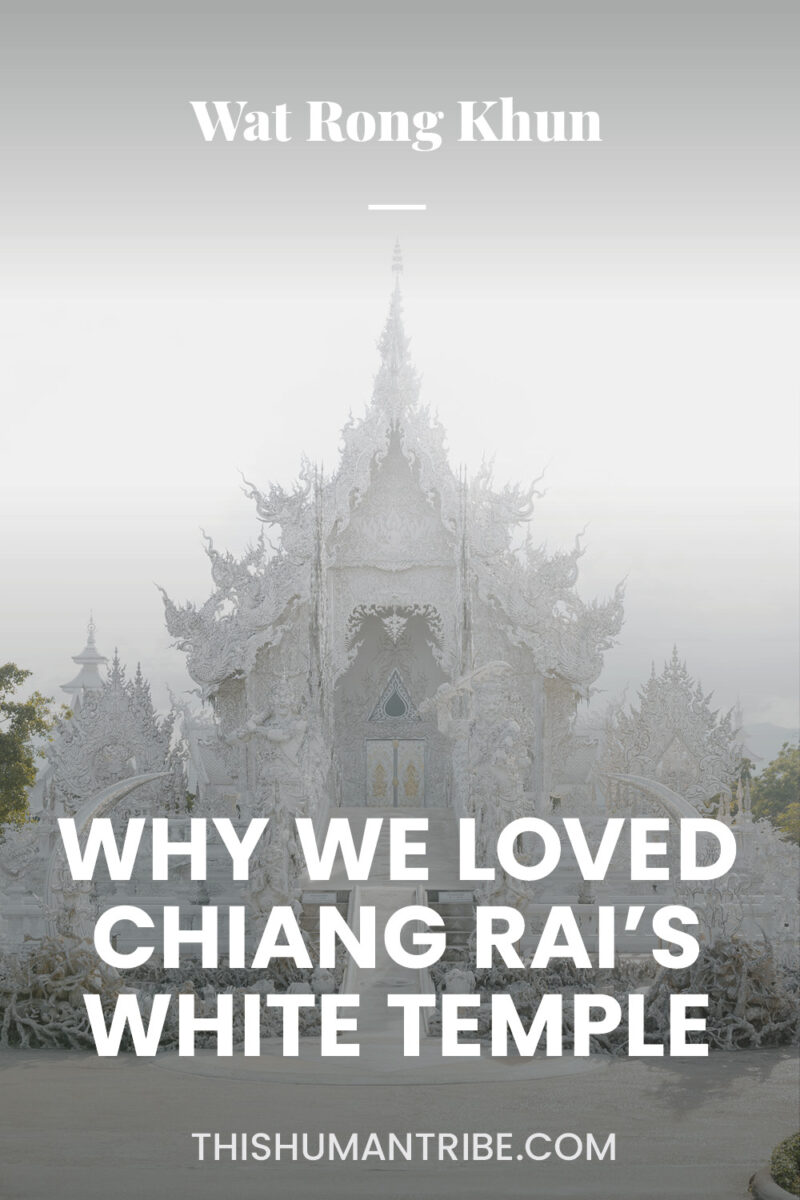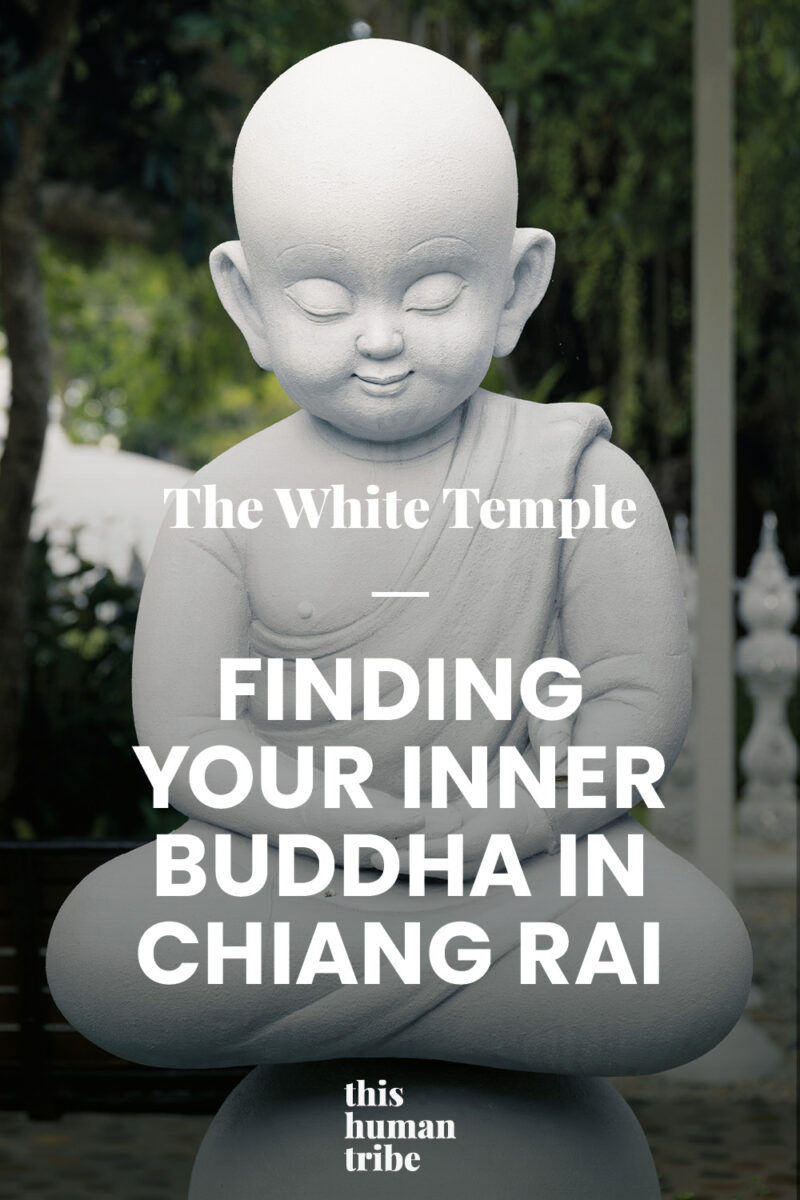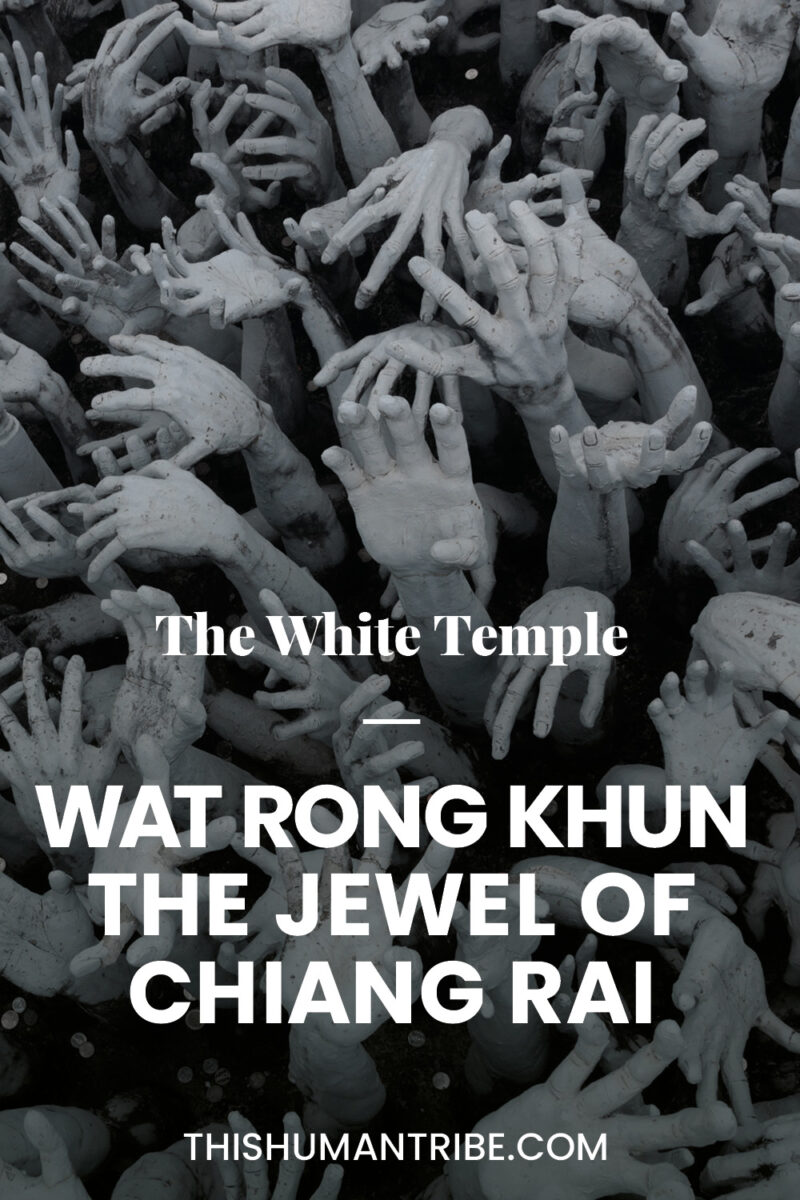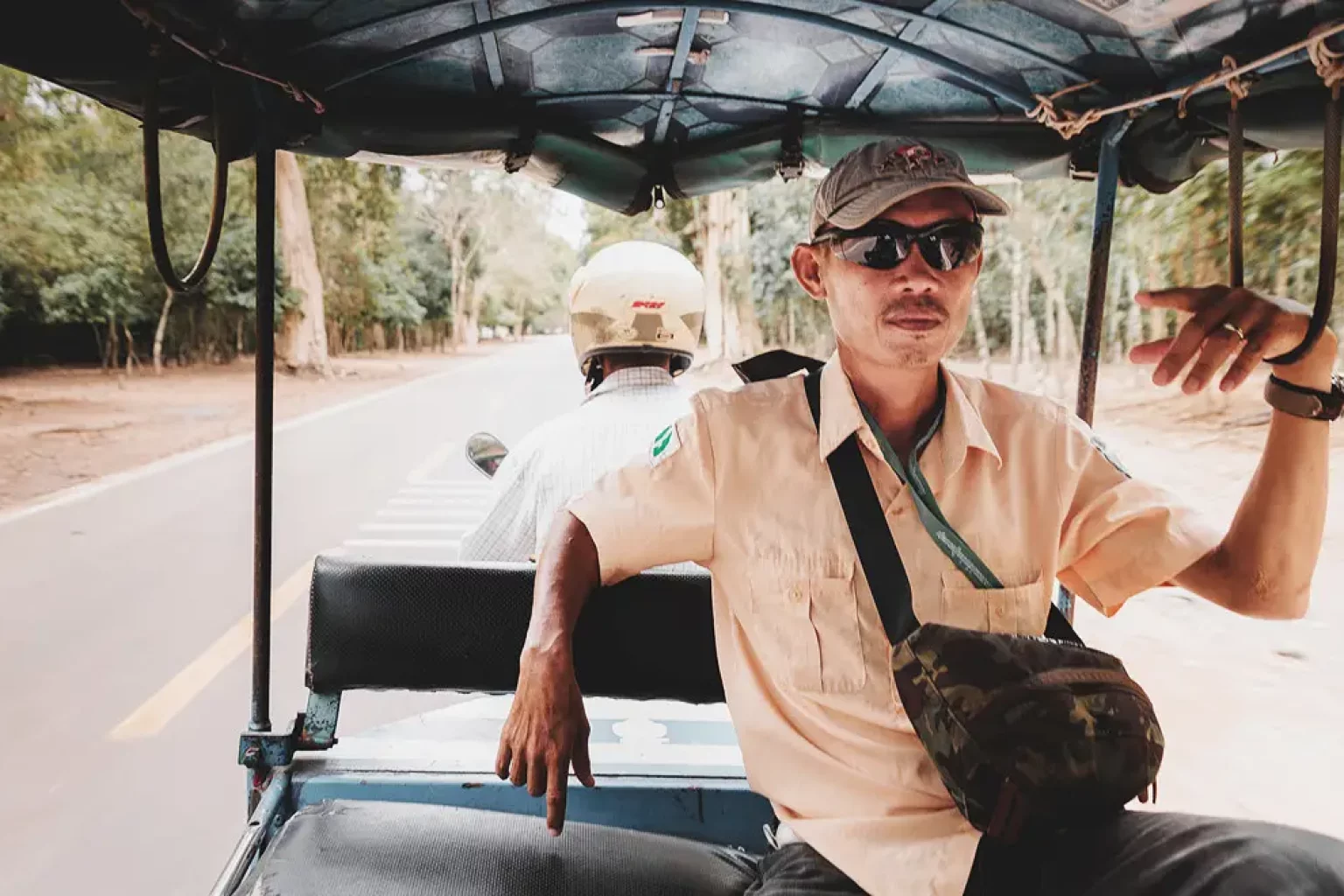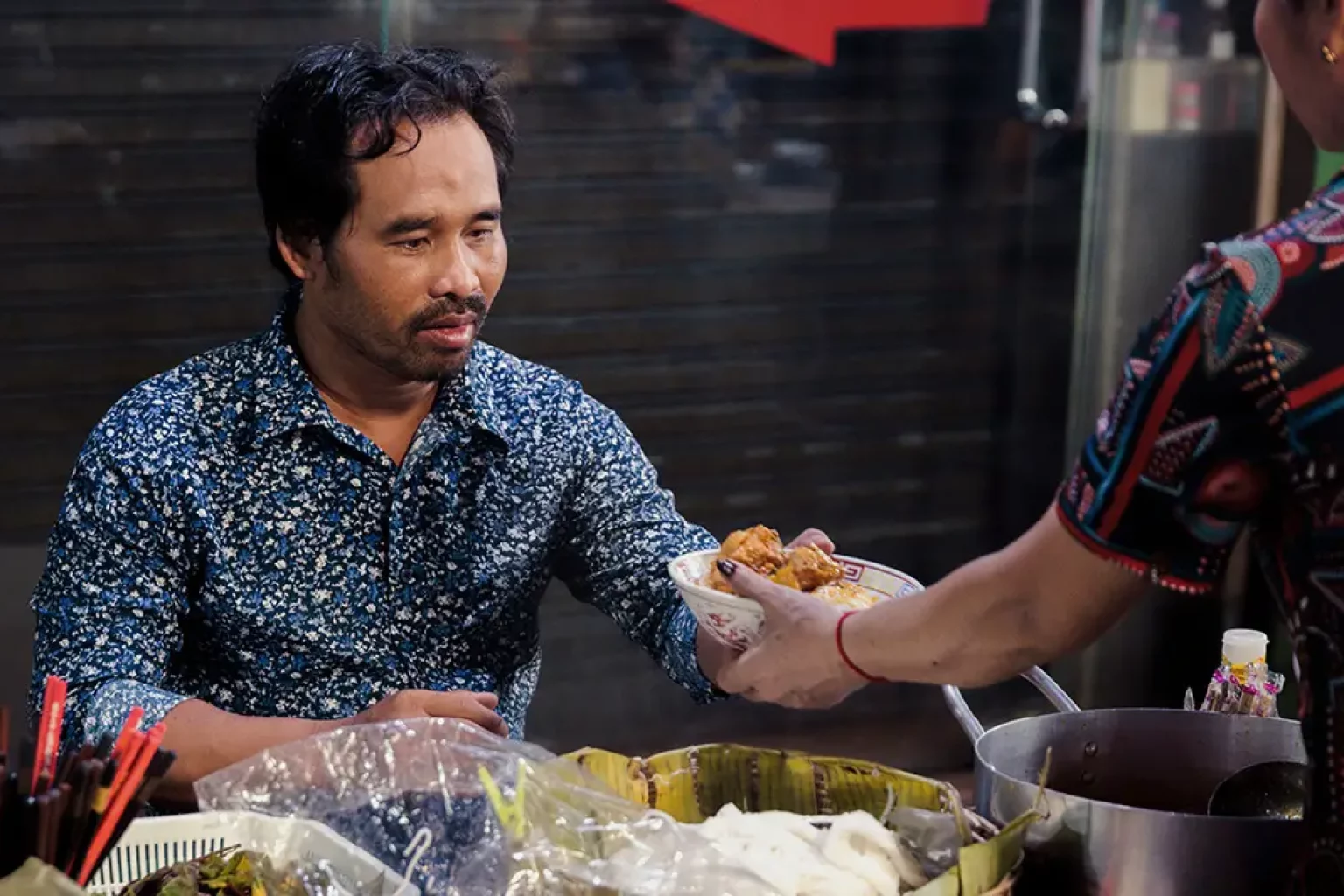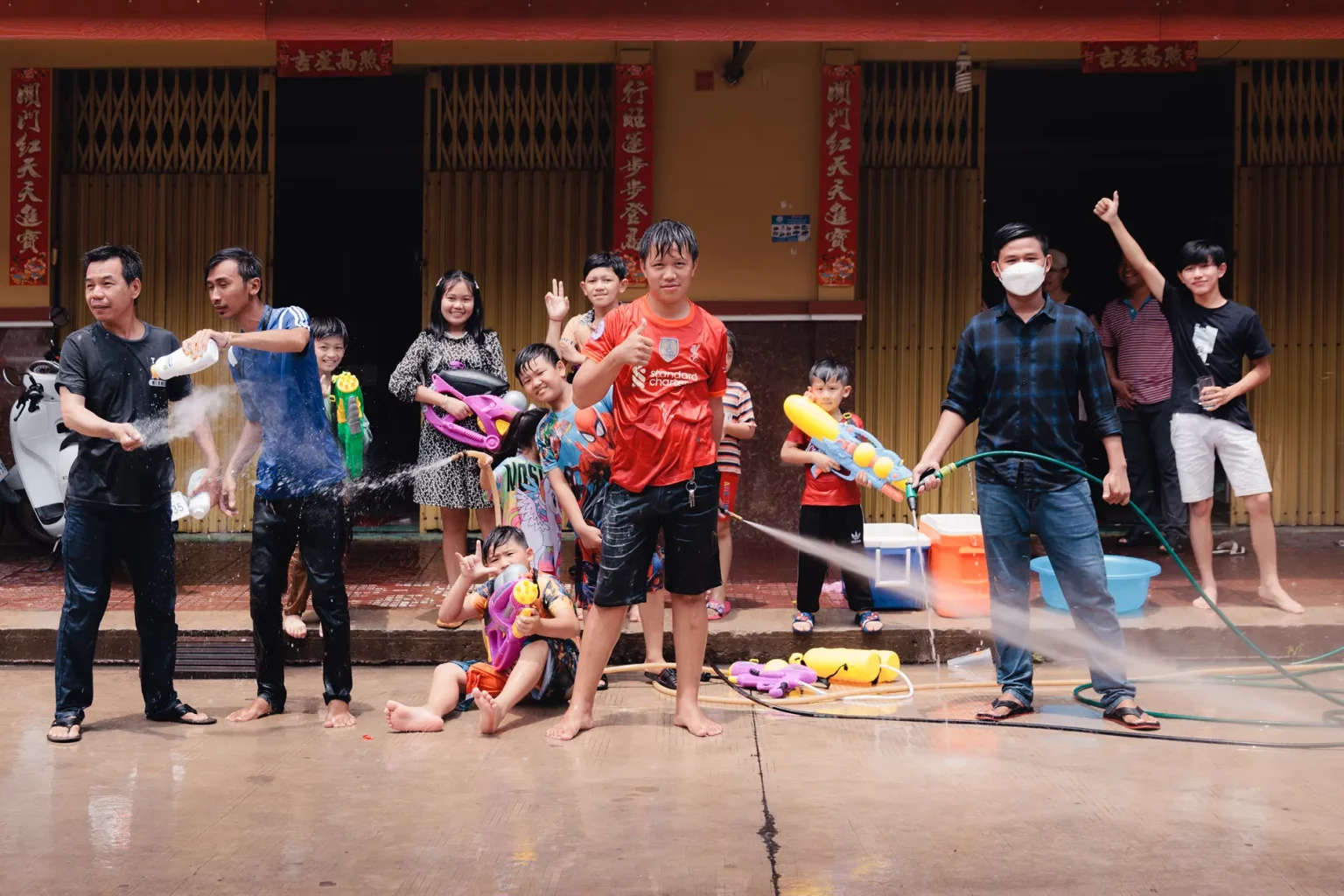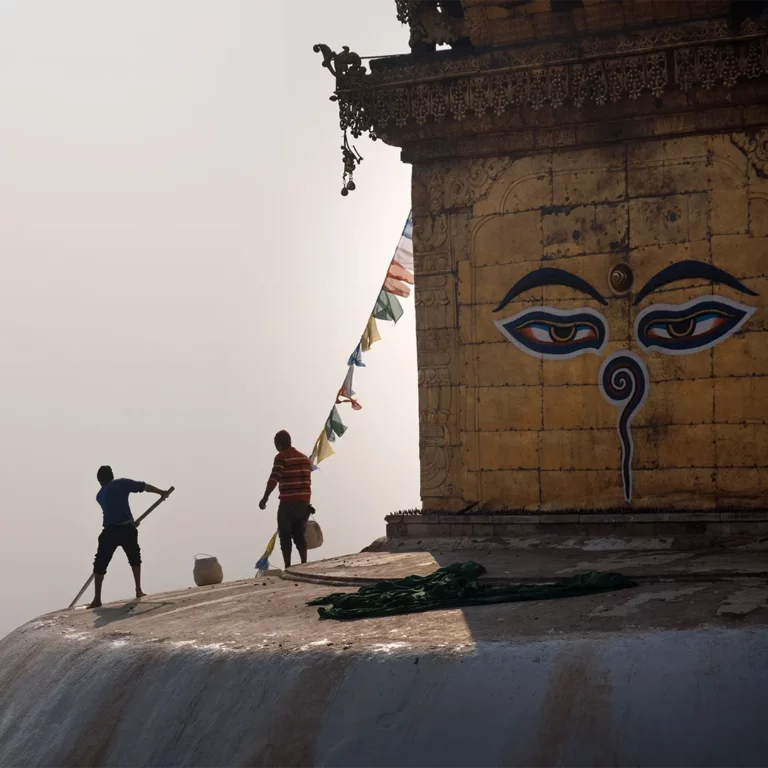There is a temple in Thailand that stands out from all others. It’s as immaculate as a first day, when nothing has happened yet, but far from being a visual representation of innocence.
This structural marvel is more than mere eye candy; it’s a thrilling journey into a surreal world, traversing the chasm between the sacred and the profane. A unique fusion of religious symbolism and contemporary art, made by the great visual artist Chalermchai Kositpipat.
Prepare to embark on an introspective exploration within the visually stunning majesty of Wat Rong Khun.
Wat Rong Khun, the White temple
It’s a piece of architecture like I had never seen before. It looks like something out of one of those dreams that can turn into a nightmare at any moment.
The structure looks like porcelain, all spikes and workmanship of shards tediously broken on purpose. In each carved image there is a symbol, with another symbol inside, and yet another one and so on.
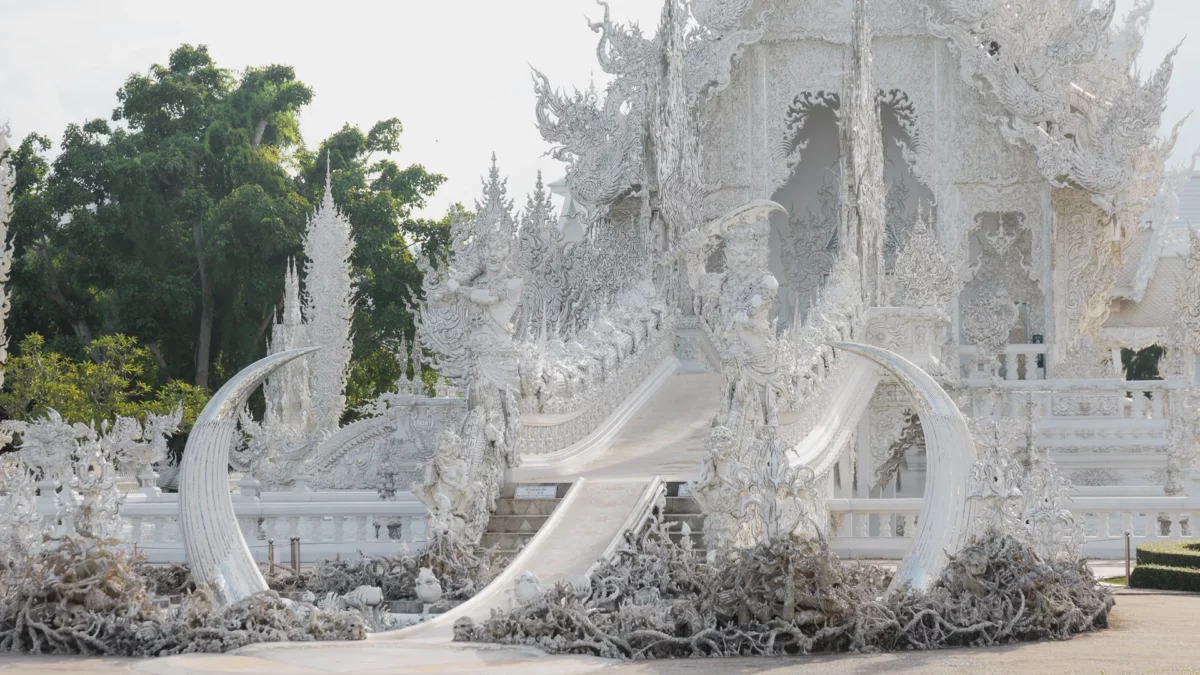
An Italian journalist described it as a meringue, and indeed, this temple looks like a surreal castle made of the white, crunchy delight suspended in mid-sky.
Deafening white
There is an overall sense of exaggeration, leaning towards apocalyptic scenarios right from the entrance, with heads hanging from trees, superheroes, and zombie hands rising from the earth to prevent you from reaching the temple, the Sacred.
We visited the temple on what was, at least initially, a grim day of white sky and light rain; our first thought was along the lines of ”well, this seems a bit much! How far are we ready to go to convert people?”. Stalagmites of egg white pierce the leaden sky, and like sugar thorns draw the contours of something that seems to have come out of a fantasy. Whiskey bottles on top of demon heads, a mirror ball monster sitting on a bench, a pop culture fresco, and a zombie pit. The temple looked more like a holy theme park crafted in the nightmares of the creator of Frozen, rather than a sacred place in which you come to find answers.
Psychedelia
Wat Rong Khun is a portal to the imaginary depiction of a modern power struggle. As in Neil Gaiman’s Gods of America, contemporary Gods fight to impose themselves on older ones.




If everything on the outside is distressingly white, like a disturbing shade of Kubrick, the interior of the main temple could only be the opposite. Blue, yellow, purple, green, airbrushed colours are everywhere, bringing to life the most bizarre jumble of characters I have ever seen. It occurs to us that nothing was left to chance in building this place. Exasperated shapes are paired with a colour usually synonymous with quietness and softness, while smoother, gentler shapes are paired with garish, glossy colours.
“I wanted everyone to know that our world is being destroyed by those who crave to build weapons that kill, thereby ruining the environment because nothing is never enough.”
Chalermchai Kositpipat
In the great house of the Buddha, idols of the West and East crowd the lower, earthly and sometimes demonic part of the wall art. It is forbidden to take photos, so you’ll have to take my word for it: everyone was there, from Sailor Moon to Pikachu and George W. Bush, from The Matrix’s Neo to Osama Bin Laden, from Batman to Michael Jackson, in a merciless critique of the mass culture that has gradually eroded the spaces and times of spirituality.
What colour is loss?
It was clear by then that there was more to this temple than just the “Neo psychedelic oriental Rococo” (© our favourite triber Jineshra Gajanandana) iconography. The chromatic, symbolic choices, the exaggerated opulence that suffocates the mind like a plastic bag over the head, are all parts of the same riotous language.
As if to walk us literally and metaphorically through this journey, the sky split open, leaving room for a shade of blue that was no less dazzling than the colours inside the main temple.
This place is a metaphor, its creator, Chalermchai Kositpipat is a visionary artist, a deep practitioner of Buddhist religion and meditation. He wanted to talk visually about the crisis of ideals and the corruption that is shattering religion in modern times, and the message I got was that if less is more, then more must be less.
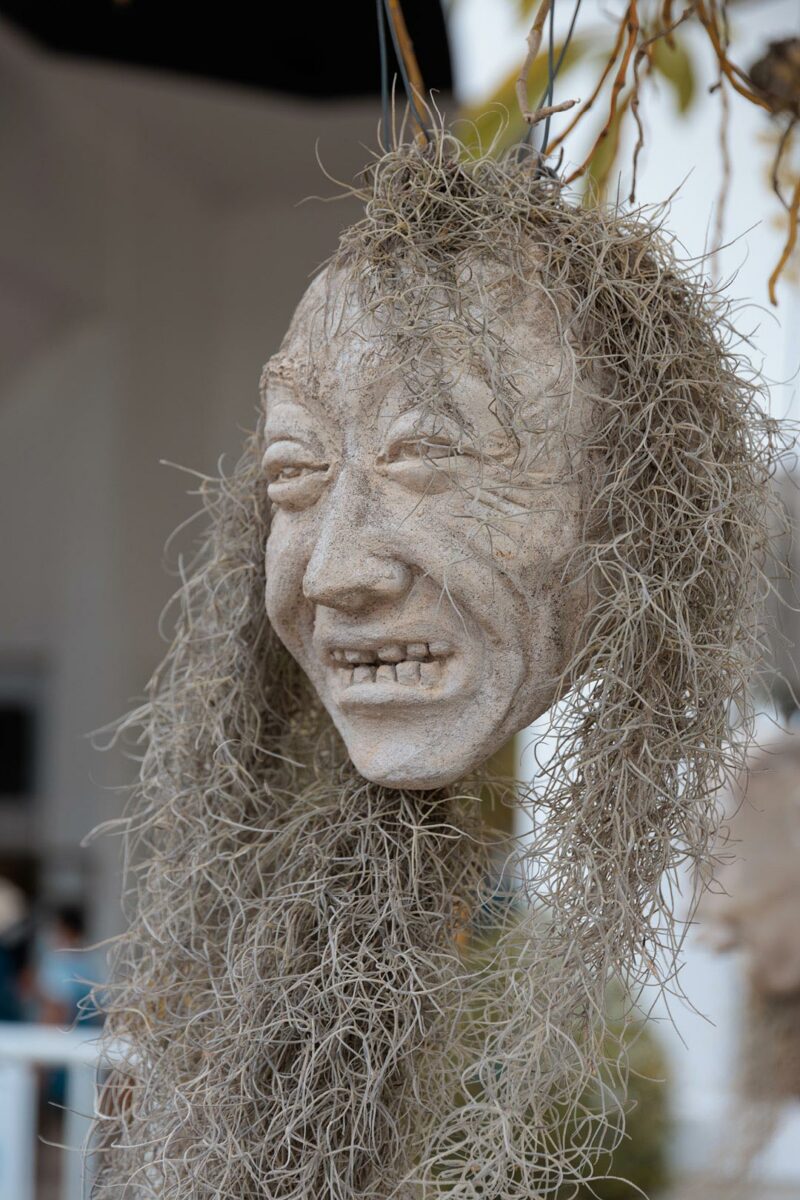
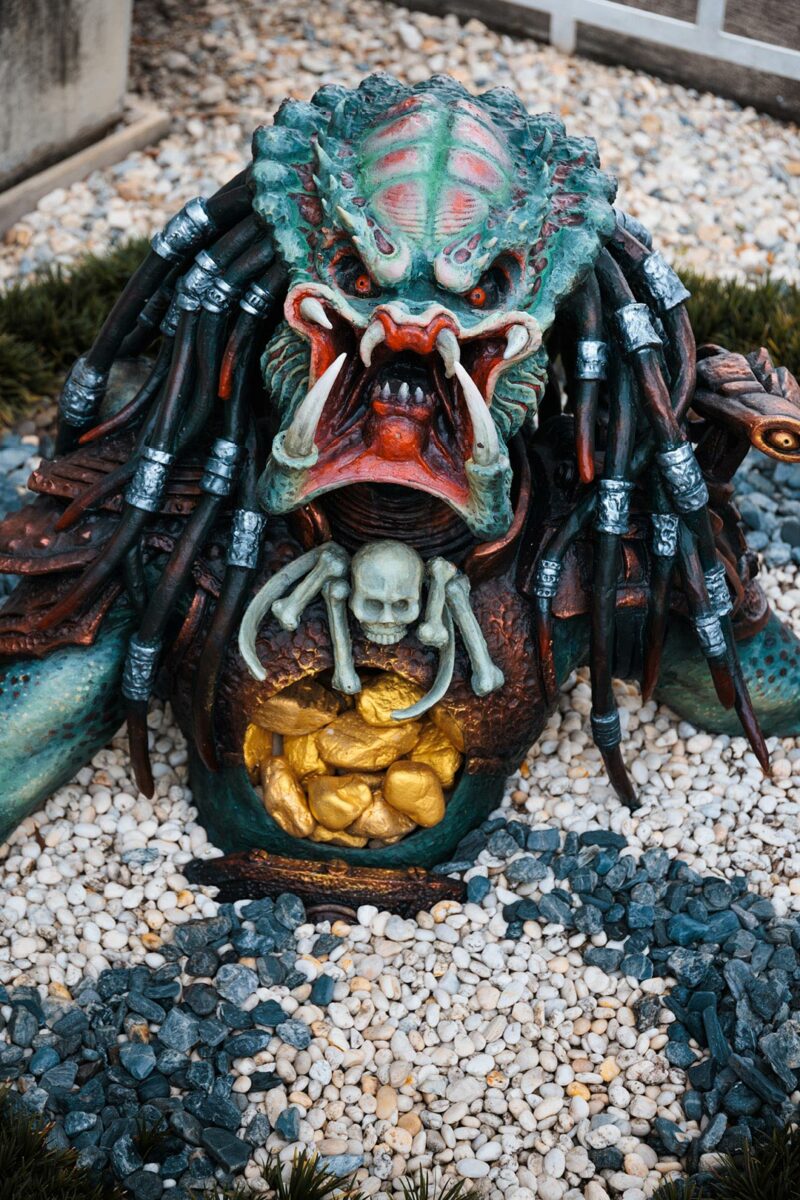
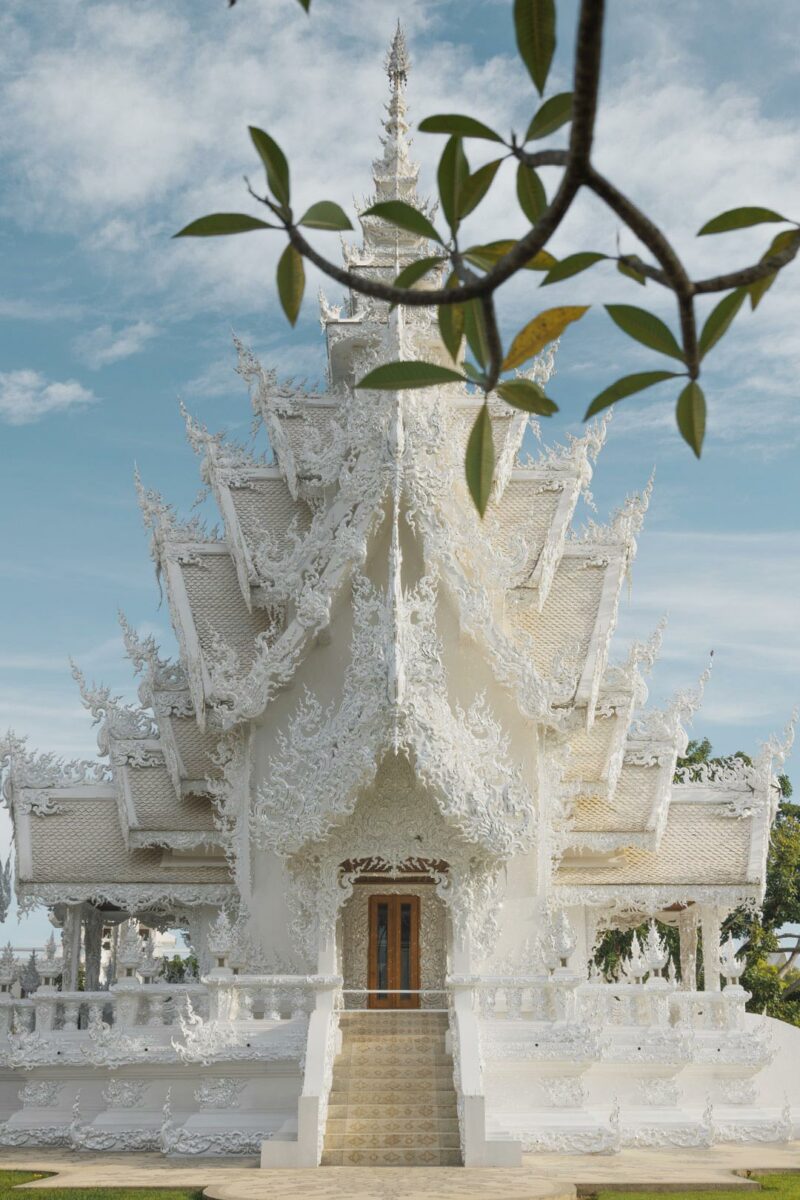
Wat Rong Khun grew on us. Thanks also to the information and illustrations found in the adjacent museum, we reached the end of our visit completely immersed in this universe of the upside down. While learning about the artist’s intentions, every oddity started to make sense, and meaning began to fall into place. Wat Rong Khun is like a psychedelic bad trip that will only make sense the next morning. And like Albert Camus’s “La chute” (The fall), Chalermchai Kositpipat offers to those who are ready to dissect their soul, a mirror into humankind’s deepest addictions.
Birth, life, death, and birth again
This is your hero’s journey, it is up to you to identify the obstacles in your path and figure out how to overcome them, however, you always have the option to stop at one of them and bend your whole life around it if you so choose.
The point is, I guess, to find yourself, figure out who you really are, or maybe who you really were, in an endless circle of birth, life, death, and rebirth. The world is full of distractions that are trying to keep you away from getting your true self back. Enlightenment takes time and every centimetre of the fresco will remind you that you are not even close, that the society you have decided to abide by is perverse. You will have to get rid of everything you believe in to begin your path to enlightenment!
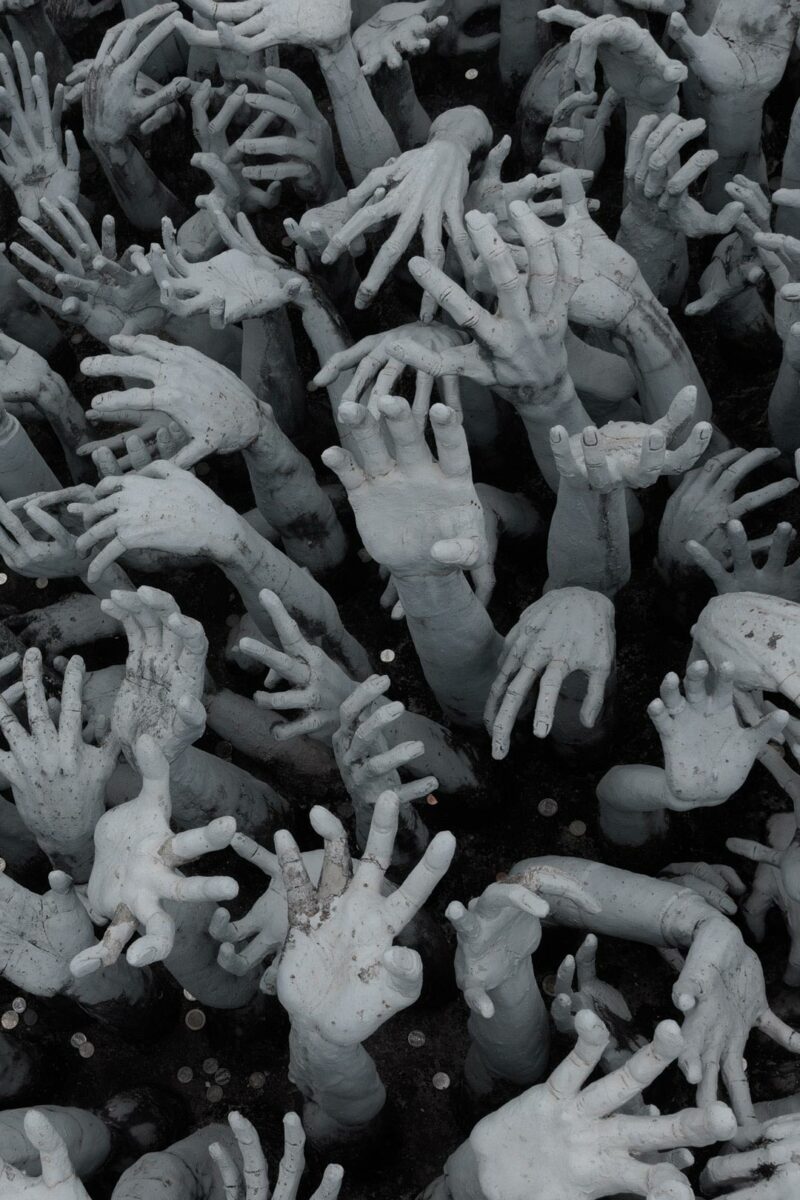
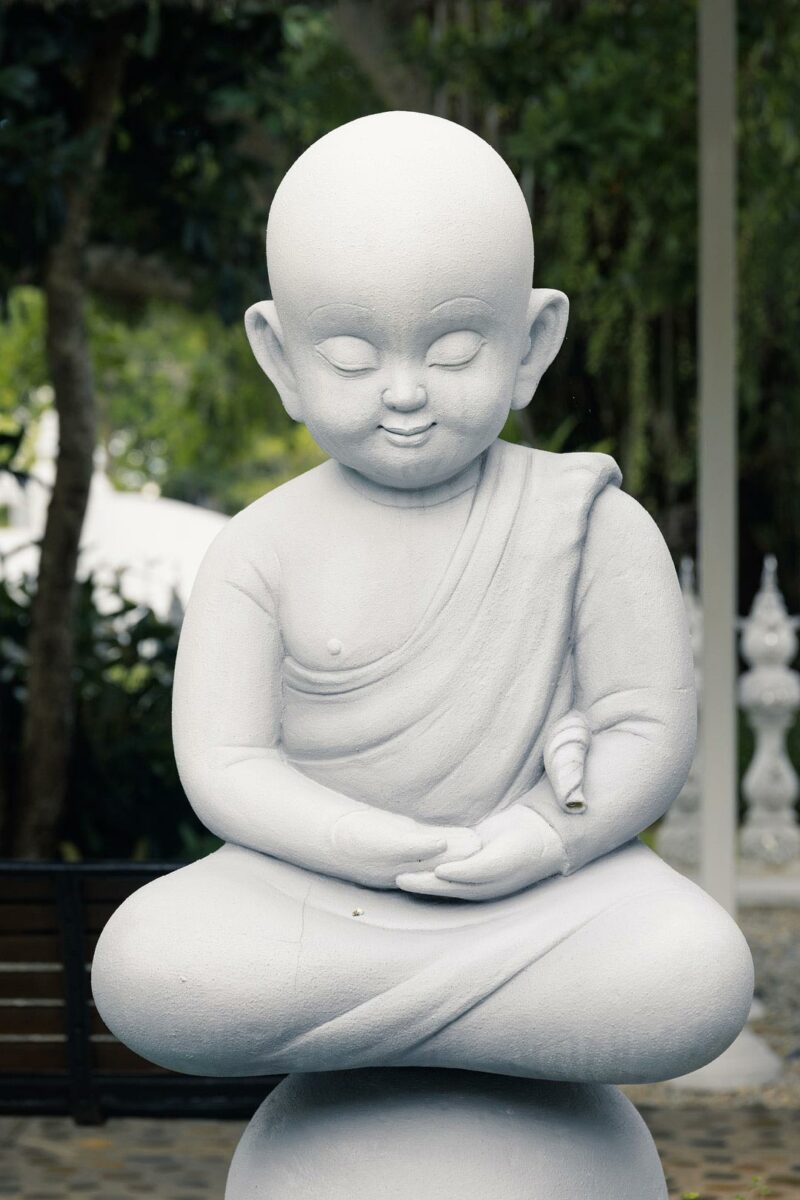
So, if by the time you leave you are still taking selfies, you probably have failed but that’s ok, the Zen baby Buddha will remind you that you still have many more lives to reach Nirvana.
The White Temple: A Journey to Self-Discovery
The white temple is a sight to behold, an immense and controversial work that we enjoyed even more in light of its intellectual value. It’s an invitation to question your own path, where the noise is made visible, and so are all the distractions surrounding the bridge you must cross to get to the temple. Will you watch your steps as a thousand zombie’s hands are trying to bring you down in hell, or will you look at the blinding temple thinking you already made it?
The power in this is that by making this place a space to learn about ourselves, its father succeeded in making it sacred, reminding us that the only temple that will ever exist is inside of us.
Look with-in to find your path with-out.
If you enjoy this article don’t hesitate to pin it!
